Zhongfeng Kang
EM-MIAs: Enhancing Membership Inference Attacks in Large Language Models through Ensemble Modeling
Dec 23, 2024

Abstract:With the widespread application of large language models (LLM), concerns about the privacy leakage of model training data have increasingly become a focus. Membership Inference Attacks (MIAs) have emerged as a critical tool for evaluating the privacy risks associated with these models. Although existing attack methods, such as LOSS, Reference-based, min-k, and zlib, perform well in certain scenarios, their effectiveness on large pre-trained language models often approaches random guessing, particularly in the context of large-scale datasets and single-epoch training. To address this issue, this paper proposes a novel ensemble attack method that integrates several existing MIAs techniques (LOSS, Reference-based, min-k, zlib) into an XGBoost-based model to enhance overall attack performance (EM-MIAs). Experimental results demonstrate that the ensemble model significantly improves both AUC-ROC and accuracy compared to individual attack methods across various large language models and datasets. This indicates that by combining the strengths of different methods, we can more effectively identify members of the model's training data, thereby providing a more robust tool for evaluating the privacy risks of LLM. This study offers new directions for further research in the field of LLM privacy protection and underscores the necessity of developing more powerful privacy auditing methods.
Layer Importance and Hallucination Analysis in Large Language Models via Enhanced Activation Variance-Sparsity
Nov 15, 2024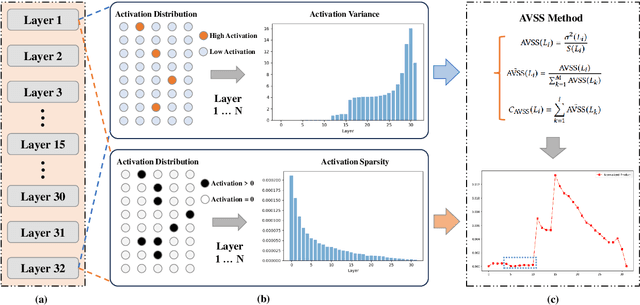
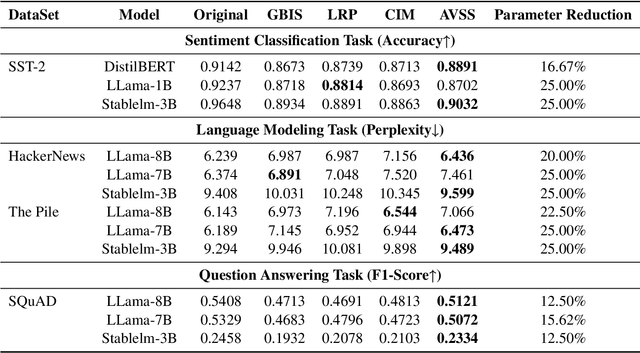
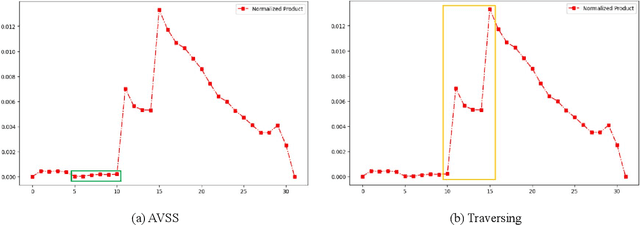
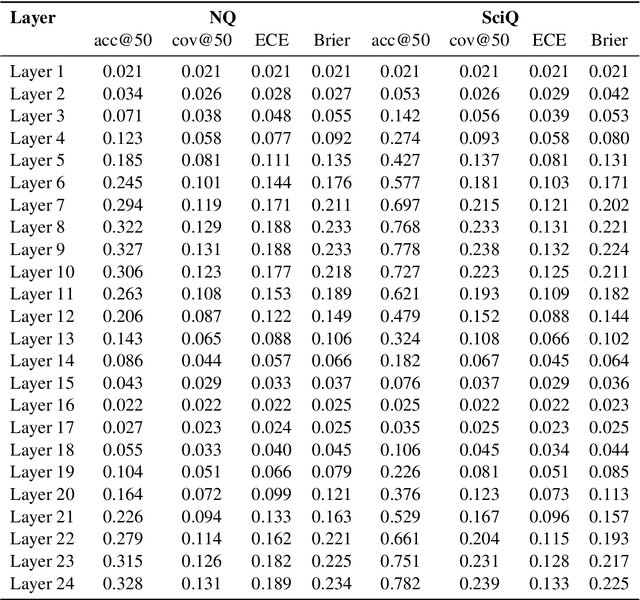
Abstract:Evaluating the importance of different layers in large language models (LLMs) is crucial for optimizing model performance and interpretability. This paper first explores layer importance using the Activation Variance-Sparsity Score (AVSS), which combines normalized activation variance and sparsity to quantify each layer's contribution to overall model performance. By ranking layers based on AVSS and pruning the least impactful 25\%, our experiments on tasks such as question answering, language modeling, and sentiment classification show that over 90\% of the original performance is retained, highlighting potential redundancies in LLM architectures. Building on AVSS, we propose an enhanced version tailored to assess hallucination propensity across layers (EAVSS). This improved approach introduces Hallucination-Specific Activation Variance (HSAV) and Hallucination-Specific Sparsity (HSS) metrics, allowing precise identification of hallucination-prone layers. By incorporating contrastive learning on these layers, we effectively mitigate hallucination generation, contributing to more robust and efficient LLMs(The maximum performance improvement is 12\%). Our results on the NQ, SciQ, TriviaQA, TruthfulQA, and WikiQA datasets demonstrate the efficacy of this method, offering a comprehensive framework for both layer importance evaluation and hallucination mitigation in LLMs.
AVSS: Layer Importance Evaluation in Large Language Models via Activation Variance-Sparsity Analysis
Nov 04, 2024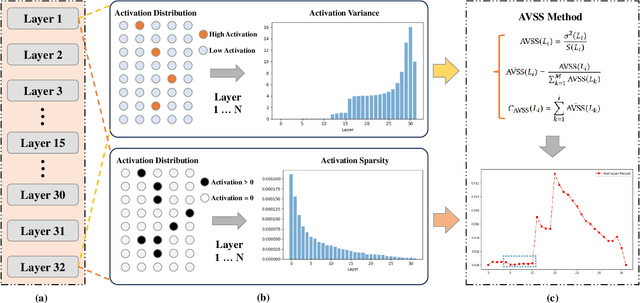
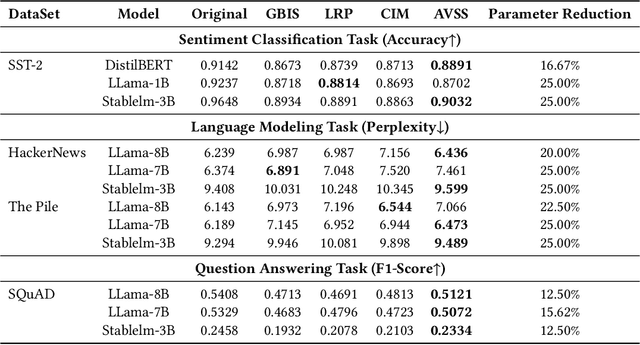
Abstract:The evaluation of layer importance in deep learning has been an active area of research, with significant implications for model optimization and interpretability. Recently, large language models (LLMs) have gained prominence across various domains, yet limited studies have explored the functional importance and performance contributions of individual layers within LLMs, especially from the perspective of activation distribution. In this work, we propose the Activation Variance-Sparsity Score (AVSS), a novel metric combining normalized activation variance and sparsity to assess each layer's contribution to model performance. By identifying and removing approximately the lowest 25% of layers based on AVSS, we achieve over 90% of original model performance across tasks such as question answering, language modeling, and sentiment classification, indicating that these layers may be non-essential. Our approach provides a systematic method for identifying less critical layers, contributing to efficient large language model architectures.
Design and Implementation of A Soccer Ball Detection System with Multiple Cameras
Jan 31, 2023



Abstract:The detection of small and medium-sized objects in three dimensions has always been a frontier exploration problem. This technology has a very wide application in sports analysis, games, virtual reality, human animation and other fields. The traditional three-dimensional small target detection technology has the disadvantages of high cost, low precision and inconvenience, so it is difficult to apply in practice. With the development of machine learning and deep learning, the technology of computer vision algorithms is becoming more mature. Creating an immersive media experience is considered to be a very important research work in sports. The main work is to explore and solve the problem of football detection under the multiple cameras, aiming at the research and implementation of the live broadcast system of football matches. Using multi cameras detects a target ball and determines its position in three dimension with the occlusion, motion, low illumination of the target object. This paper designed and implemented football detection system under multiple cameras for the detection and capture of targets in real-time matches. The main work mainly consists of three parts, football detector, single camera detection, and multi-cameras detection. The system used bundle adjustment to obtain the three-dimensional position of the target, and the GPU to accelerates data pre-processing and achieve accurate real-time capture of the target. By testing the system, it shows that the system can accurately detect and capture the moving targets in 3D. In addition, the solution in this paper is reusable for large-scale competitions, like basketball and soccer. The system framework can be well transplanted into other similar engineering project systems. It has been put into the market.
 Add to Chrome
Add to Chrome Add to Firefox
Add to Firefox Add to Edge
Add to Edge